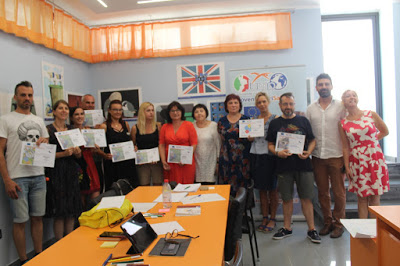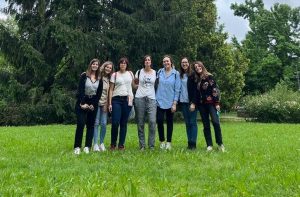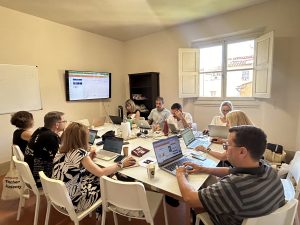Apuntes generales CLIL – AICLE es práctica
Aprendizaje Integrado de Contenidos en Lenguas Extranjera.
Intentaremos resumir esta movilidad de Erasmus+ a Italia con una práctica del metodo CLIL: compartiendo contenidos en inglés, entrenándonos a aprender y uasr esta novedosa metodología, ya que el método CLIL está siendo adoptado cada vez más por los Ministerios de Educación en Europa como un enfoque innovador para la enseñanza de idiomas modernos.
Es un método motivador para la enseñanza de áreas temáticas: matemáticas, biología, química, plástica, música, educación física…. o simplemente como una contribución a la internacionalización y al ideal del plurilingüismo: «CLIL Teachers» capacitados se han hecho más evidente en las aulas del siglo XXI.
Nos vamos a animar entre todos repasando estas importantes claves:
– Organisational Support is KEY: CLIL requires coordination between English teachers and content teachers and it might require organisational change before it can get going.
– Providing Englis language support to timetabling for extra preparation time, CLIL is prep intensive producing specialist materials, not just translating existing materials.
Practical steps for CLIL planning and delivery.
– CLIL is work intensive for teachers, though once materials have been delivered and tested they can be applied again and again.
– Pioneering any new technique is never easy – we need to be committed and work hard to make a change: «failing to plan is planning to fail!»
Goal setting:
All lessons should start with goals. Goals help teachers to develop logic from one lesson to the next, and help other techers to orientate themselves in collaborative works.
ALL CLIL LESSONS SHOULD HAVE GOALS THAT RELATE TO:
BICS development – CALP acquisition – subject knowledge increase
cognitive development – improvement of cultural understanding
– How to use language?
– How can we learn a subject if we don understand the context, and we don’t understand the subject terms?
(The CLIL method we address here assume a base already ser in the L» from traditional language curriculo.
⇒ Developing BICS setting out CALPS providing SCAFFOLDING
1. BICS: Basic Interpersonal Comunicaton Skills : everyday english or social english.
Vital in lessons for instruction and guidance: «Today we’re going to…Do you understand? can you identify? Which, who, where….
BICS are language skills – usually developed within the previous years – which helps to communicate and express basic ideas.
BICS are used to ‘identify specific information, name objects, match and sort objects into sets’
2- CALPs: Cognitive Academic Language Proficiency.
Whilst BICS develops naturally through language learning and language use, CALP needs to be set out and taught at the beginning of the lesson, for instance, when starting a science unit on planets.
IDENTIFYING CALPs: for subject teachers, it can be easy to identify what academis language is required to engage with the subject properly.
– Research and planning is key to identify CALP, create workbanks, and find effective ways to communicate these words and phrases to students.
Have students build their own word lists by readind a L2 key text, highlighting words they don’t know, and researching them: ‘Scaffolding’
Scaffolding is a mode of supporting language to maintain content.








